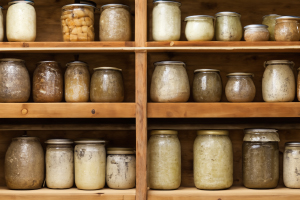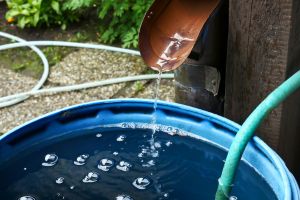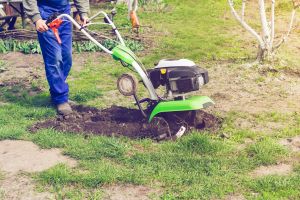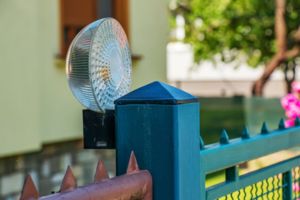Do This Before the End of Spring

![]()
As the world wakes up from its long winter nap, springtime is a flurry of activity, and with everything that’s going on, it’s easy to miss some important tasks on your homestead.
The prepper lifestyle requires a lot of planning, and the busy times of the year can make it hard to focus on the essentials you’ll need in an SHTF scenario.
Here’s a list of what to do before the end of spring to help keep you on track.
Take stock of what you have and get organized, paying attention to the expiration dates on everything in your freezers, pantry, and bugout bags.
Check your emergency gear and supplies for damage, wear, and missing items. Don’t forget to test and replace batteries for any devices in your emergency preparedness kits.
 By the end of spring, your root cellar should be done storing last year’s food supply. Open the door and let it air out! Remove any remaining food items from the previous year’s harvest, and get your vacuum cleaner in there to clean out all the dust and debris. If you have shelves, wipe them down with a disinfectant to remove mold and mildew.
By the end of spring, your root cellar should be done storing last year’s food supply. Open the door and let it air out! Remove any remaining food items from the previous year’s harvest, and get your vacuum cleaner in there to clean out all the dust and debris. If you have shelves, wipe them down with a disinfectant to remove mold and mildew.
Before you know it, your garden will be in full swing, and you’ll be ready to start harvesting fresh produce. Now is a good time to restock your canning jars, lids, pectin, and other food preservation supplies to have them when your harvest is ready.
If you’ve ever gone to the store during jam season to look for pectin or jars–only to find bare shelves–you’ll understand the importance of getting this done early!
Since your generator must be ready for any emergency, it should be near the top of your list of priorities when completing any seasonal checklist.
Gas and diesel-powered generators need to be started up and run for at least ten minutes every two to three months, so even if you already checked your generator at the end of winter, it’s time to do it again.
 Spring is a great time to install a rainwater harvesting system to take advantage of free water and make your homestead more sustainable.
Spring is a great time to install a rainwater harvesting system to take advantage of free water and make your homestead more sustainable.
Rainwater systems can cost as little as $100, while extensive systems with underground tanks, pumps, and filtration systems can cost thousands of dollars.
Starting with a rain barrel kit from any home improvement store and using the gutter system on your home, you can have a small system in place in less than a day.
Rainwater systems are an excellent emergency backup water source, but that’s not the only benefit they offer. Because rainwater hasn’t been treated, it’s much better for soil health than the water from your municipal system. It’s also great for washing your car.
Spring cleaning your home is something people like to do naturally. The chicken coop, on the other hand, is not as enjoyable. Still, it needs to be done to keep your chickens healthy.
Over the winter, your chicken coop accumulates droppings, dust, and litter and can harbor pests like rodents and mites. Without proper cleaning, these conditions can lead to pathogens that could harm you or your chickens. Be sure to wear proper safety gear when cleaning your coop, such as a dust mask or respirator.
 Before the end of spring, double-check your spring equipment. With all the equipment and gadgets you have for maintaining your yard and homestead, it’s easy to overlook one when completing your spring chores.
Before the end of spring, double-check your spring equipment. With all the equipment and gadgets you have for maintaining your yard and homestead, it’s easy to overlook one when completing your spring chores.
All your equipment needs an annual spring check or tune-up, from lawnmowers to leaf composters.
If you don’t have a spring equipment checklist, now is a good time to make one. Here are some of the most common types of equipment homeowners have:
While drip and sprinkler systems are the best irrigation systems for your lawn and garden, they require spring maintenance. Even if your system isn’t automated and you use hoses and lawn sprinklers for watering, it’s a good idea to inspect all your watering equipment and determine what works and what needs to be thrown away.
 Outdoor lighting is often an afterthought, but it’s essential to maintaining a safe and secure home.
Outdoor lighting is often an afterthought, but it’s essential to maintaining a safe and secure home.
Not only does outdoor lighting impact your home’s curb appeal, but it also makes it less likely to be visited by intruders. Lighting also extends the usability of your outdoor spaces.
Since spring is the best time to install a lighting system in your yard, now is the perfect time. You can replant the lawn or flower beds in your yard, and they will have plenty of time to rebound and look great for the rest of the season.
Although many people start seedlings indoors in early spring, summer is a great time to start perennial herbs and flowers. Although starting from seed takes longer, you will get more plants at a fraction of the cost. Order your seeds before the end of spring, then get them started before the end of July.
No matter what type of fertilizer you use, spring is the best time to fertilize lawns, gardens, fruit tree orchards, and fields. Using a natural, organic fertilizer like manure, top-dress your fruit trees, shrubs, and perennials to ensure they have all the nutrients they need during the peak growing season.
Depending on where you live, you can scout for spring mushrooms to add to your pantry. Some common types of mushrooms found in the springtime include morels, shaggy manes, pheasant backs, and golden oyster mushrooms. Sunny days following periods of heavy rains are the best time for mushroom hunting when the balance of humidity and temperature creates the perfect growing environment.
Spring is fleeting, and because you have a lot to do, it’s easy to miss out on some of the best things about this pleasant time of year. Everywhere you look, plants are coming to life, animals are having babies, birds are nesting, and new homes are being built. There’s farm, garden, and yard work to do, but don’t forget to take some personal time to enjoy nature.
Do you have any more end-of-spring tasks in mind? Ask a Prepper readers always offer valuable advice, and we’d love to hear from you. So, go ahead–share any other chores you think should be on our list and ensure we’re all ready for the rest of the growing season!
You may also like:
 Apocalypse Survival Foods You Should Stockpile Right Now
Apocalypse Survival Foods You Should Stockpile Right Now
How to Build the Invisible Root Cellar for Cheap (Video)
These Are the Best Chicken Breeds for Preppers
Money Saving Tips From Real Survivors Of The Great Depression
Best States For Self-Defense. Do You Live In One Of Them?
